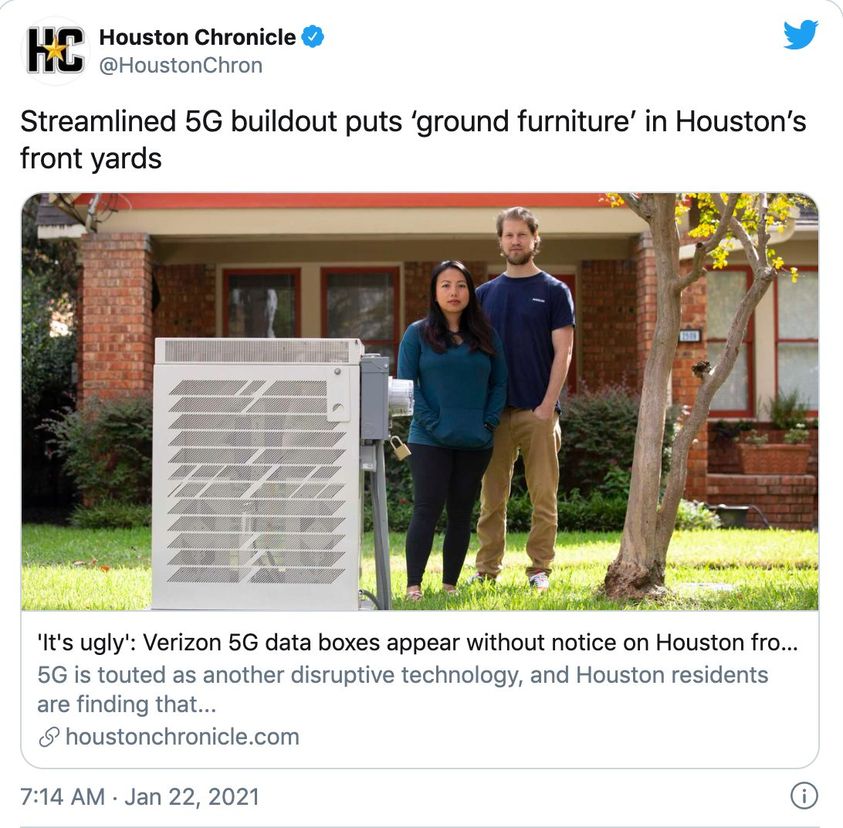A”Microcell” is a low-powered cellular radio access node that has a range of 10 meters to a few kilometres and is used to increase a cellular network’s capacity.
“Microcell” is the name industry and government in Canada initially used for what is called a “Small Cell” in the United States. Recently, Canada has adopted the term “Small Cell” but alas – this site and its acronym had already been born! Technically “Small Cell” is the umbrella term for femtocells, microcells and picocells.
The term “Small Cell” is regularly misused, even by industry. Accurately speaking, a cell is not an antenna, but the effective area/range of an antenna’s radiation. Telecoms plan to install hundreds of thousands of microcells, often several to a block, to transmit the millimetre wave high frequencies of 5G. Millimetre waves have a short range and don’t propagate well, which is why industry needs to install a lot of small cells for 5G to “work.”
5G will not replace 3G and 4G, but will join them. Because 5G is a mix of frequencies, 5G antennas are also being placed on macrocells (“Large Cell” towers) to transmit low to mid band 5G. Despite what we are told, when it comes to antennas and transmitters, distance is not our friend. The farther the source, the greater the reflection and refraction of signals. The physics of artificial electromagnetic radiation show that any antennas is too close. Exposing all living thing to toxic wireless technology is damaging our ecosystems and causing serious biological harm.
A Verizon 5G Data Box arrives without notice on a Houston lawn, 2021:

